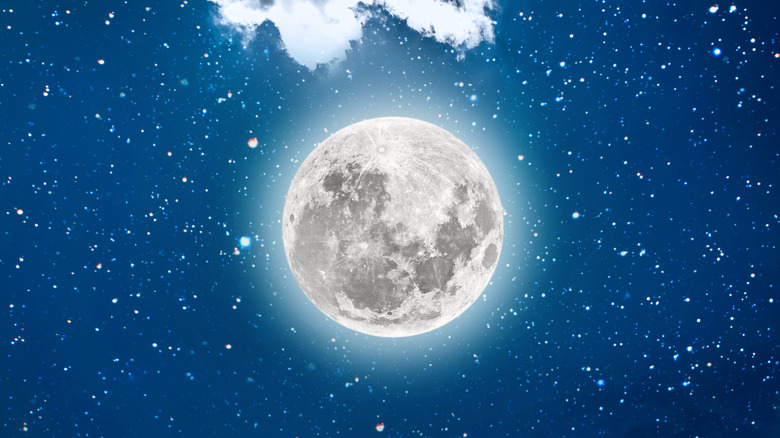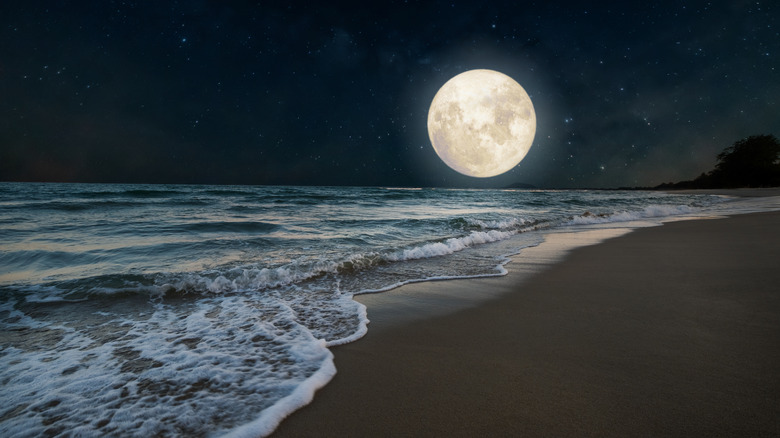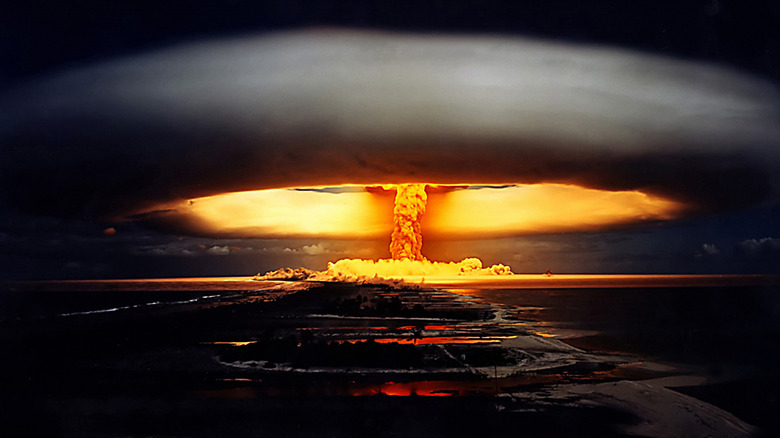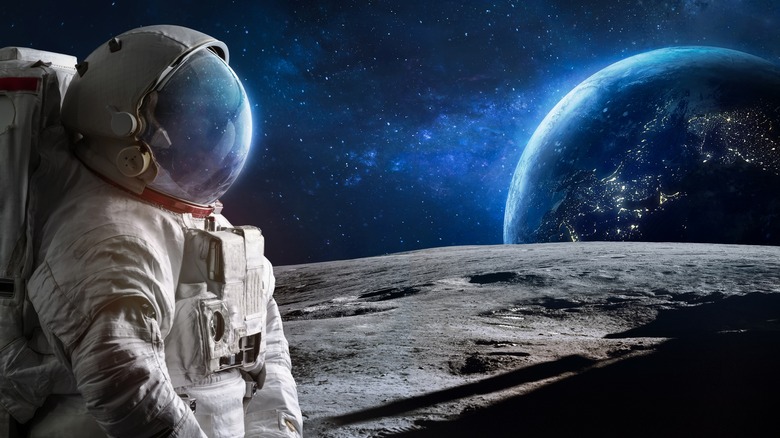What Would Really Happen If The Moon Disappeared
The glow from a full moon casts the perfect ambiance on a romantic dinner or an evening stroll along the beach. Ancient people used the moon as a clock and a calendar (via Science News). The fifth-century Greek philosopher Anaxagoras was arrested and exiled for positing the theory that the moon was actually an object and not a god. In the 13th century, famed English philosopher and Franciscan friar Roger Bacon thought the moon's rays caused the Earth's seas to evaporate (via Medievalists).
While it's always been a focus of our attention, the moon is usually taken for granted. It's been up there for billions of years, so we're as accustomed to seeing it as clouds, trees, or oceans. In fact, in 2020, planetary geophysicists from the German Aerospace Center and the University of Münster came up with a new calculation for the formation of Earth's satellite at 4.425 billion years ago (via Phys).
The moon is an average of 238,855 miles away and is the closest celestial object to our own planet. With a diameter of approximately 2,159 miles, it's about a quarter the size of Earth. That 1:4 ratio is more significant than any other in our solar system, as noted by Space, so the Earth's moon significantly impacts its planetary partner. But what would happen if the moon suddenly vanished?
The moon has sway over the Earth
Most people probably wouldn't notice if the moon went AWOL — at least not at first. According to Astronomy, people living near the oceans would see an immediate change in low and high tides, with their size decreasing by more than half. Tide change would dramatically impact ecosystems along every coastline, with sea creatures like barnacles, crabs, mussels, and starfish likely going extinct (via Royal Museums Greenwich).
Land animals, especially nocturnal ones who rely on moonlight to hunt, would be so confused they would eventually die out from starvation. Since all of Earth's ecosystems rely on each other, a chain reaction that starts with the extinction of coastal sea life would lead to humanity's struggle to survive. Astronomy goes on to note that the Earth tilts on its axis at 23.5 degrees because of the moon's gravity. Without the moon, we could expect that tilt to rocket anywhere from 10 to 45 degrees, which would change Earth's seasons and climate. Closer to a zero degree tilt would result in having no seasons, and a more significant angle would result in extreme weather changes, possibly even inducing a new ice age.
Humans rely on both seasons and climates to plant and harvest crops. Removing those patterns established over thousands of years would sharply reduce humanity's ability to grow and produce food. In the end, the moon is a required partner in the cosmic dance of life. Without it, life on Earth would eventually come to an end, and we'd lose all those wonderful NASA toys sitting on its surface.
That hasn't stopped people from wanting to nuke the moon
That risk hasn't stopped some outlandish projects in the past, however, including plans to actively explode a nuclear bomb on the moon. With the Russian space agency having successfully put the Sputnik satellite into orbit, the United States Air Force explored the possibility of setting off a huge nuke on the moon's surface. The 1958 project — not publicly revealed until 2000 when the physicist in charge, Leonard Reiffel, detailed the wild plot — was part publicity exercise and part science experiment, the Guardian reported. The explosion would've been visible from Earth and launch a huge dust cloud, but the scheme was scrapped after the military decided the benefits were shadowed by the potential risks.
Fast forward a decade and, in 1969, lunar geologist Dr. Gary V. Latham — then of Columbia University — pushed NASA to undertake a wild experiment involving intentionally setting off a bomb on the dark side of the moon. Rather than just being trigger-happy, though, Latham's goal was to see what affect that nuke might have on a pair of seismometers a previous mission had left on the surface, the New York Times reported, and in turn reveal new details about the satellite's construction.
Now, the moon is a destination, not a target
Facing outcry — not least because of fears as to how the Russians might respond — the plan was shelved the following year, the New York Times reports. Since then, perhaps sensibly, scientists have been less gung-ho about blowing up our closest celestial neighbor, seeing it more as a destination than a target.
NASA's Project Artemis will return astronauts to the lunar surface later this decade, if all goes to plan, aiming not only to end humanity's five decade absence from the moon but establish a permanent base there. The facility will work in tandem with the proposed Lunar Gateway, an orbiting station that will act as a waypoint both to the moon base and — eventually — further afield altogether. In fact, NASA says, it hopes to use the Lunar Gateway, along with lessons-learned and technology from Artemis, on a future crewed mission to Mars. After all, taking advantage of the moon's low gravity and proximity for scientific exploration, rather than as a target for spare nuclear warheads, seems like a far better use of resources.



